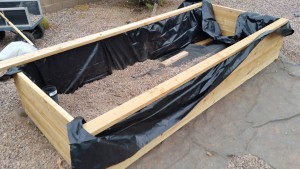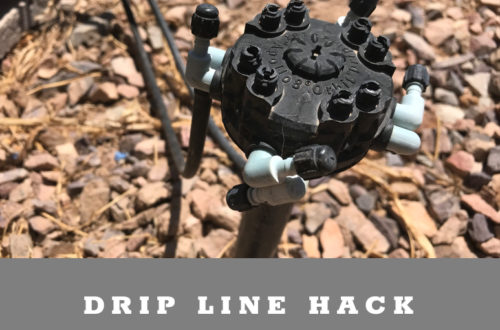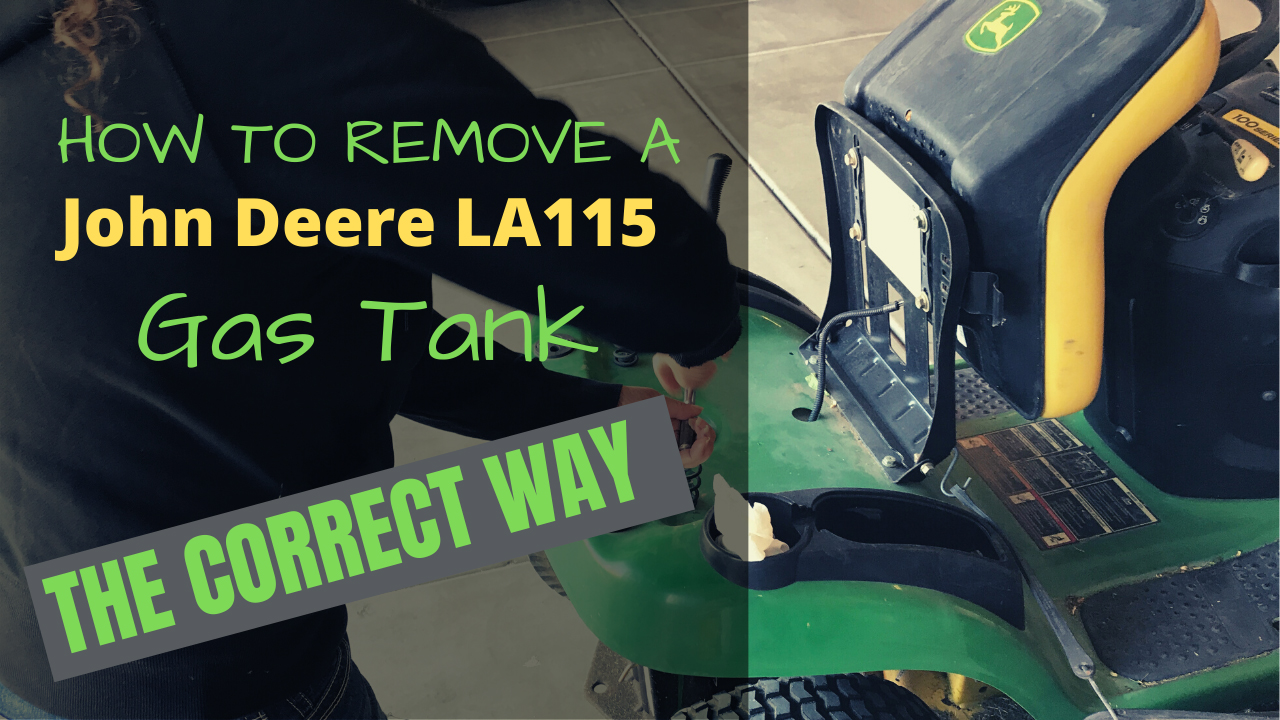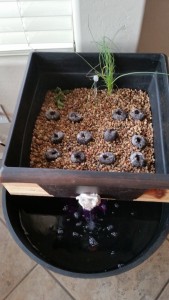
Aqua what? Aquaponics!
My love of gardening plus my love of tinkering = a love for trying & building new things.
One day the kids and I were home. I was browsing the net looking for new ideas for my Arizona garden… and low and behold.. what did I find. Aquaponics. This is like a tinkerer’s dream come true… build a self-contained system using grow beds, pipes, pumps, (duct tape), and fish to create a sustainable food production super system.
So I look at the kids and ask them if they want to get a new pet… or 6. Of course, the answer was yes. So off we went… first to the home improvement store for supplies. Since we are now living in Arizona, in JULY, raising fish outdoors in boiling hot pools of water seems to be out of the question. And since I have no experience with raising fish I figured it was best to start small.
My posts may contain affiliate links. If you purchase something from one of our links we may earn a small commission, doesn’t cost you any more but helps us to bring you more great tips, recipes and garden ideas. Also, as an Amazon Associate, I earn from qualifying purchases.
How an Aquaponics system works:
Build or buy a fish tank.
People can use anything from fish tanks to food-safe water barrels to water storage tanks to house their fish. In this tank, you place a water pump and your fish (more to it than that, these are just the basics) that will pump the dirty fish water into a shallow grow bed filled with rocks or clay pellets.
Flood & Drain Baby!
This system is called a flood and drain system because as soon as they grow bed fills to a predetermined point, it will automatically drain back into the fish tank via a bell siphon that can easily be made out of PVC pipe.
How an Aquaponics System works:
The water from the fish fertilizes the plants in the grow bed. The grow bed media (gravel, pellets.. etc.) filters the water and returns clean water back into the fish tank. In theory, you never have to clean your fish tank or fertilize your plants. Plants are said to grow faster and more closely spaced than conventional planting.
Anyway, to continue my story, we purchased a large plastic half wine barrel type planter and a smaller square flower pot to match. We also purchased lava rock and PVC pipes to build the drain system. Then we searched the store for this fountain pump.
Since we are only constructing a small indoor system to see how the system works on a smaller scale, we picked out a pump that pumps up to 3 ft. This number as well as the flow rate is important depending on the size of your setup. You need the pump to be able to cycle through all the water in the tank every hour.
So home we went to set up the Aquaponics system.
It did take longer than expected to complete. Since the nearest hydroponics store was over 45 minutes away, I decided to use lava rock and fish tank gravel for the grow media in my bed. We thoroughly rinsed the rocks outside in a bucket before adding to the system. After the bell siphon was made and installed, we completed filling the bed.
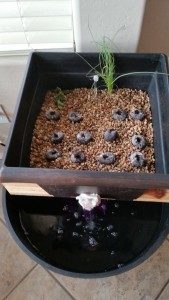
(UPDATE)
Word of advice...
.……make sure you run through several cycles first to make sure the bell siphon is working properly. By the second day we had to adjust the siphon because it stopped working. The last thing you will want to do is tear apart your grow bed while your fish are swimming happily in the tank below.
The last thing we needed was the fish.
Since we were excited to get started, we did purchase the fish the same day we purchased the supplies for the tank. In hindsight, we should have waited a couple of weeks to get the system up and running. But I am happy to tell you that the fish are doing fine 3 weeks later.
We decided on 2 Shubunkins and 3 feeder goldfish…. and my daughter had to have a Beta fish all to herself….. and no the Beta does not live with the goldfish. More on that later.
Here are some images of our small indoor Aquaponics system. Please do your research before building one and adding fish. There is more to it than the supplies needed. You need to monitor the water for Ammonia, Nitrites, and PH to make sure the fish are healthy and happy. You also have to let the system cycle for 6 weeks so the good bacteria can set up in the grow bed to convert the waste into a usable form for the plants to use.
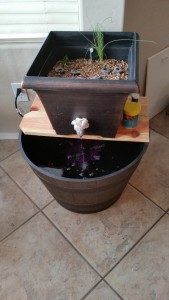

For more information on how a well run system works and the intricacies it involves, I would highly recommend the book: Aquaponic Gardening, A Step By Step Guide to Raising Vegetables and Fish Together


I found this book halfway into my project. This book is very informative and talks about just about everything you need to know about aquaponics including stories from the author’s adventure into this addicting hobby. Even you are interested in setting up a small test system like mine, it is a great resource to have in hand.
Want to learn more about aquaponic gardening? Check out some of these great courses and ebooks:
Aquaponics 4 You is a complete course to help you setup your own full size system: ( see video on the website)

Here is another great course that we recommend:

The best part about this courses is they both offer a complete 60 day money back guarantee and support.
